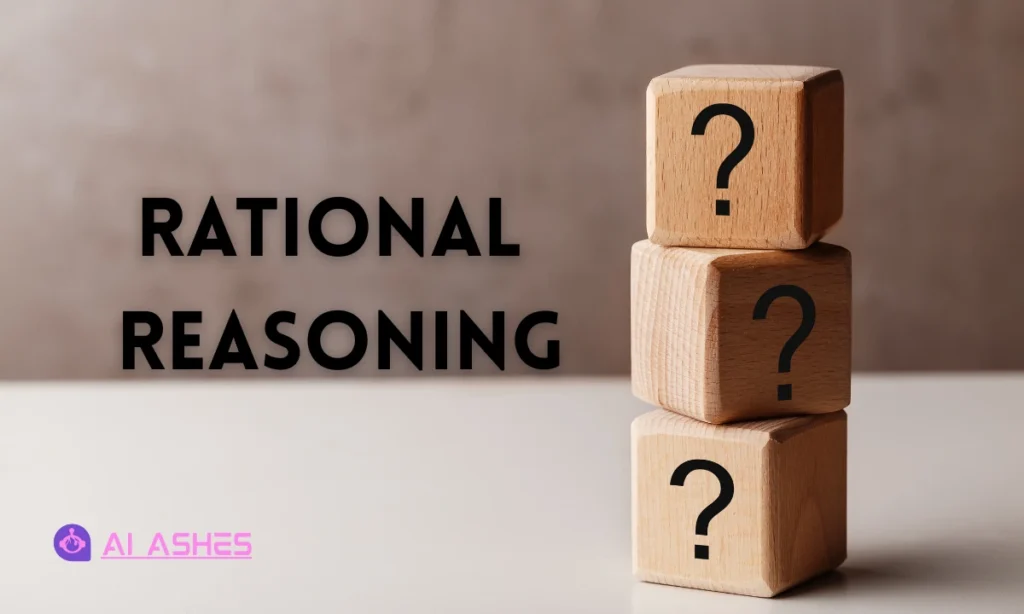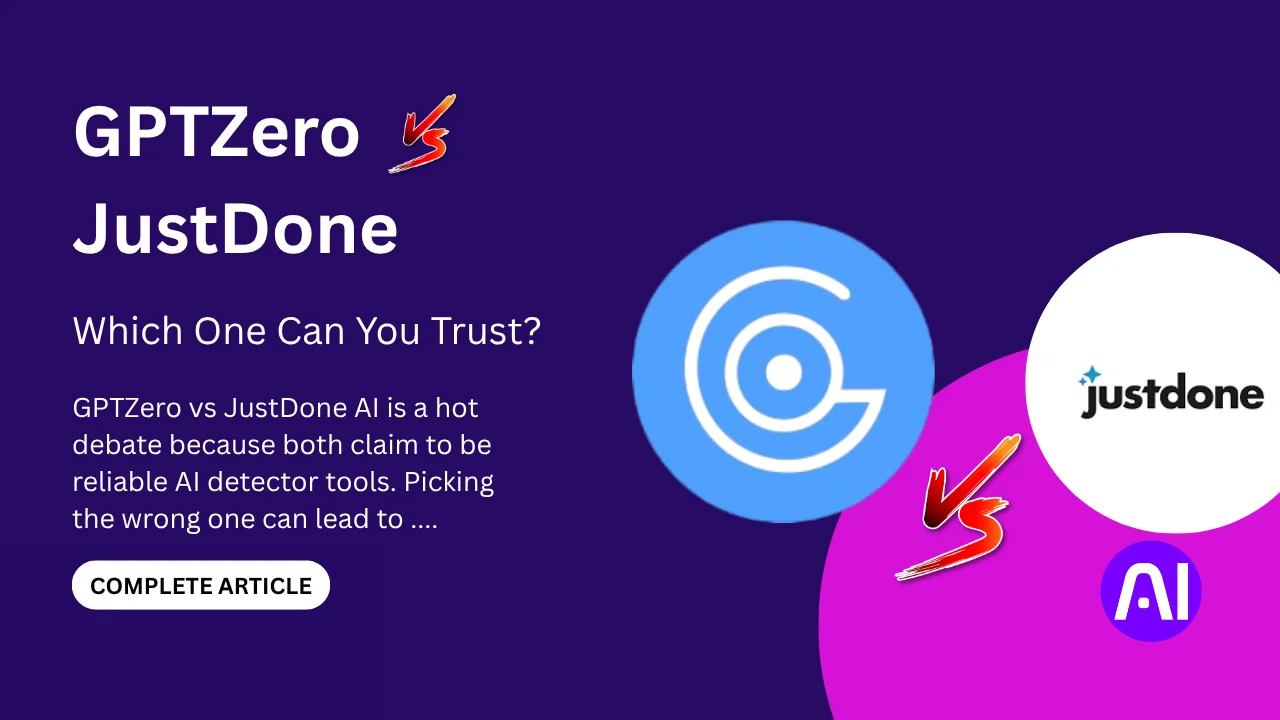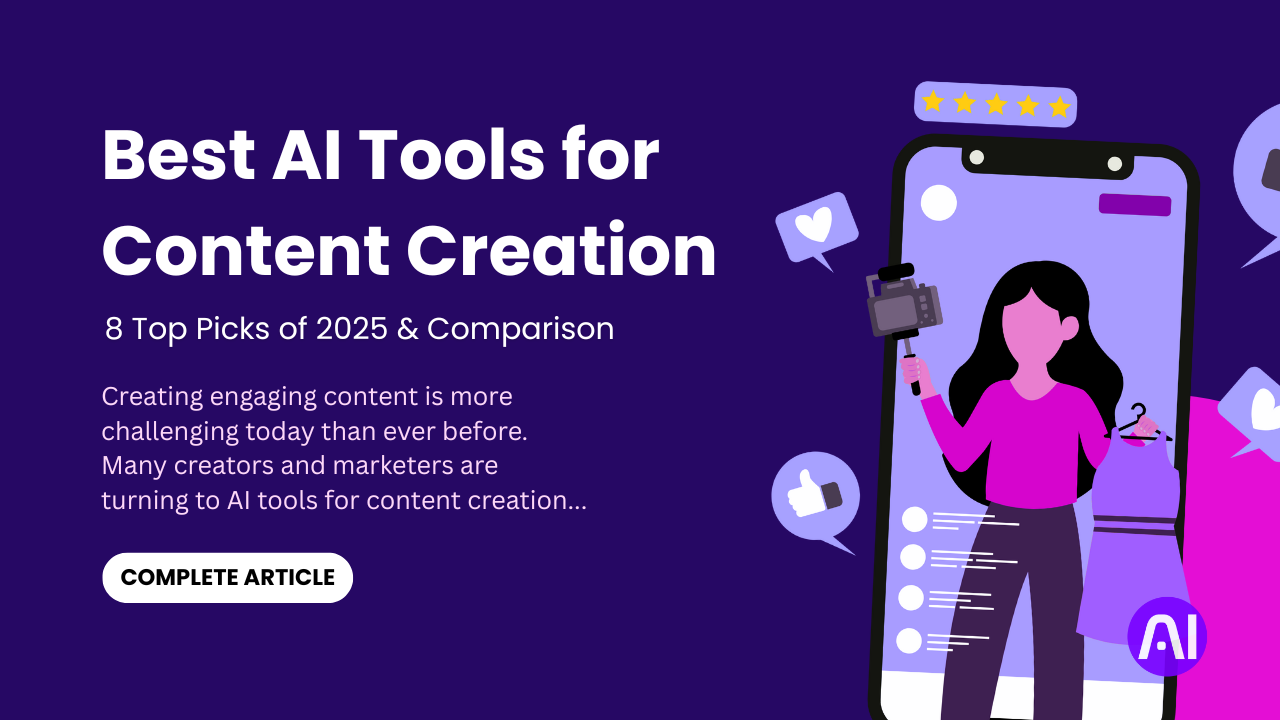Smart machines can now make decisions faster than humans. In just seconds, they solve problems we might take hours to understand. But there’s something behind this power. It’s called rational reasoning and it’s not just for AI. We have it too.
Rational reasoning is the quiet skill that helps both people and AI make better choices. It uses deductive reasoning strategies to solve hard problems with logic, not guesses. This is the same process that helps AI beat chess masters or doctors make tough calls. It’s also what guides self-driving cars and helps AI write like humans.
This article is about unlocking that hidden power. Whether you’re new to thinking deeply or already trained in it, you’ll find tips here that work. We’ll explore how AI rational reasoning works, why it matters, and how you can use it too. You’ll also see the importance of AI-driven rational reasoning in problem-solving processes, and how it shapes smarter tools and sharper minds.
By the end, you’ll understand how thinking clearly is not just smart, it’s the future. And you’ll know how to sharpen your own skills like the best thinkers and machines do.
What Is Rational Reasoning & Why It Matters

Rational reasoning means using facts, logic, and clear thinking to make decisions. It is different from acting on emotions or gut feelings. While emotions can help in some moments, they often lead to fast choices without thinking. Rational reasoning takes a step back. It asks questions. It looks for proof. Then it chooses the best path.
Rational Reasoning vs Intuition
Let’s say you are choosing a job. Intuition might tell you to take the one that “feels right.” But rational reasoning looks deeper. It compares pay, skills, location, and growth. It helps you choose based on real facts. That is what makes it so powerful.
This way of thinking uses deductive reasoning strategies and analytical reasoning methods. It breaks down problems into small parts. Then it solves each one with logic. These methods are also used in math, science, and coding. You may have seen them used in platforms like GeeksforGeeks and Medium when explaining AI logic.
Why It Matters in AI
AI rational reasoning is now a big part of how smart systems work. AI tools do not just react. They follow logical decision frameworks. These are step-by-step rules that help machines solve problems. Just like a person would.
For example, when AI filters spam emails, it checks facts. It looks at the words used, the sender’s data, and more. Then it uses logic to decide if the email is good or bad. This is not a guess. It is a smart choice based on reasoning.
AI tools also use AI critical reasoning. This helps them look at many sides of a problem. They can weigh the good and bad before acting. It makes their choices more fair, safe, and smart.
Why You Should Care
Rational reasoning is not just for AI or big thinkers. Rational reasoning is for everyone. It sharpens decision-making in daily life. Students use it to improve test performance. Leaders rely on it to avoid mistakes. And it makes machines smarter too.
If we combine human thinking with AI tools, we get the best of both. We make faster, smarter, and fairer choices. That is why rational reasoning matters more than ever today.
Human vs. AI: How Rational Reasoning Powers Different Minds
Humans and AI both use logic. But they do it in different ways. Our brains rely on life experience and emotions. AI uses data and patterns. Both try to make good decisions, but they follow different paths.
How Humans Use Rational Thinking
Humans use deductive reasoning strategies. This means we start with a general rule, then apply it to a case. For example, if all fruits have seeds, and an apple has seeds, we say an apple is a fruit. We also use feelings, memory, and values to shape our final choice.
We make connections between ideas. Sometimes we jump to conclusions. Sometimes we rethink and correct ourselves. We often use logic, but also let emotions guide us. This can be both a strength and a weakness.
How AI Uses Reasoning
AI follows something called chain-of-thought reasoning. AI builds answers step by step, following a clear path of logic. Instead of guessing, it solves problems with structured thinking. This is how AI critical reasoning works. It mimics the way humans think, but without emotions.
Modern logical AI systems follow rules made from data. These rules are trained through deep learning. The AI learns patterns from huge sets of examples. Then it uses these patterns to make smart moves. This kind of reasoning helps AI write answers, plan tasks, or even drive cars.
Limits of AI Reasoning
A recent study by Apple’s Machine Learning Research found that AI still has limits. Their model, called LRM, was great at language but weak at deep reasoning. It could follow facts, but failed at solving complex logic chains. This shows AI still needs better reasoning models.
The Stanford Encyclopedia of Philosophy explains that while AI can follow logic, it lacks full understanding. AI cannot feel or reflect the way humans do. This limits how deep its reasoning really is.
What This Means
Humans think with reason and emotion. AI thinks with logic and steps. Chain-of-thought reasoning is AI’s way of handling logic. It is a form of AI critical reasoning that’s improving fast, but still not perfect.
Knowing how both minds work helps us use each better. It shows where we are strong, and where AI can support us.
Step-by-Step Framework for Improving Your Rational Reasoning
Anyone can get better at rational reasoning. You just need the right steps. Whether you are new to this or already skilled, these strategies will help you think more clearly and make better choices.
This section gives you a full plan using simple logic and modern tools. You will also see how to connect these steps with analytical reasoning methods and structured decision-making approaches.
1. Clarify Your Assumptions
Start by asking what you believe to be true. Are these facts or just guesses? Most poor decisions come from false assumptions. List out what you think is true. Then check if there is any proof behind it.
2. Use Mental Models
Mental models are simple ways to look at problems. Think of them like maps for thinking. One model is cause and effect. Another is supply and demand. Use these models to break down big problems into small, clear parts.
They help you avoid confusion and stay focused. Smart thinkers use these tools every day. These are part of analytical reasoning methods used in both business and science.
3. Test Your Hypothesis
Treat your ideas like guesses. Try to prove them wrong. This is called hypothesis testing. If the idea fails, learn from it. If it works, build on it. This is a key part of structured decision-making approaches. It lets you take action with confidence.
4. Reflect and Iterate
After any decision, stop and think. Look at what worked. Identify what didn’t. Then think about how to improve it next time. This loop of trying, learning, and improving is how pros build strong reasoning skills.
Even tools like AI do this. Some developers use pseudocode structuring to train AI to reflect on steps and improve output. You can do this too by writing out your thought process. It helps you see gaps and fix them.
Final Tip
Use AI tools to test logic and explore ideas. AI does not replace your thinking. But it helps you see new angles, check facts, and model choices faster. When you mix human insight with smart tools, your reasoning gets even sharper.
How to Develop Your AI Rational Reasoning Skills
You can train AI to think better by giving it better prompts. This is part of developing AI rational reasoning skills for decision-making. When you use the right steps, AI gives smarter answers. You also learn how to ask better questions and solve problems faster.
This section shows how to use simple prompt tricks like chain-of-thought, role-play, and simulations. These ideas come from top tools in AI prompt engineering.
Use Chain-of-Thought Prompts
Reasoning chain prompts guide the AI to explain its steps. Instead of asking for a final answer, ask it to walk through the problem. For example:
Wrong: What is 37 times 42?
Better: Think step by step. First break 37 into parts. Then multiply each by 42. Add the results.
This helps AI show its logic. It also makes mistakes easier to catch.
Try Role-Play Prompts
Make the AI take on a role. You can ask it to act like a teacher, judge, or expert. For example:
Act as a business coach. Walk me through a smart plan to grow my startup in 6 months.
This makes the AI apply reasoning from different views. It trains both your thinking and the AI’s logic flow.
Use Scenario Simulations
Start with a real-world case for the AI to solve. Ask how it would respond and why. This method helps strengthen AI critical reasoning. For example:
“You are a city planner with two days to restore power. What’s your step-by-step plan and reasoning behind each move?”
These simulations teach the AI to weigh risks and options. This builds better reasoning chain prompts.
Practice Prompt Engineering Daily
Just like humans, AI gets better with practice. Use AI prompt engineering for reasoning in daily tasks. You can write ideas, plan your day, or solve problems using prompt methods.
By doing this, you sharpen your own thinking too. You learn how to ask better questions. You also see how smart decisions are built from simple steps.
Start small. Practice daily. And soon, your reasoning, human and AI will be on a new level.
Real‑World Case Studies: Think Like the Masters
Here are two real-world case studies that show how top thinkers, human and AI, use rational reasoning in powerful ways. These examples highlight the importance of ai-driven rational reasoning in problem‑solving processes.
Human Case Study: Judge Using Deductive Reasoning + AI Help
Context: U.S. Circuit Judge Kevin Newsom faced a tough legal question: what does “physically restrained” mean under federal law?
Thinking Steps:
- He looked at the legal rule, what the law says.
- He asked ChatGPT what people usually mean by “physically restrained.”
- He compared that AI-assisted explanation to court precedent.
Outcome: The AI helped the judge see patterns in everyday language. He used that to back his legal logic, though his conclusion still relied on human analysis. This shows a classic legal reasoning case study where human deductive logic is enriched through AI input.
AI Case Study: Analyst Compares ChatGPT vs Gemini
Context: Evercore ISI analyst Mark Mahaney faced another complex challenge: assessing the DOJ’s antitrust case against Google.
Thinking Steps:
- He fed eight hours of transcripts into ChatGPT and Gemini.
- He asked both AI models two key questions: main takeaways, predicted remedies.
- Both AIs used chain-of-thought reasoning, giving a step‑by‑step analysis.
- He compared their answers to expert legal forecasts.
Outcome: Both AI tools gave coherent summaries and similar judgements to experts. This was a clear problem‑solving AI demonstration showing how structured AI reasoning can support high-stakes decisions.
Key Insights from Both Cases
| Aspect | Human Deductive Example | AI Chain-of-Thought Example |
| Foundational Logic | Based on legal rule & legal precedent | Based on transcript data and patterns |
| Reasoning Style | Deductive reasoning strategies | AI’s chain-of-thought reasoning |
| Role of AI | Supports human logic | Drives AI critical reasoning |
| Result | Strengthened judge’s decision | Gave fast, expert-level insights |
Why These Matter
Both examples show how combining human logic with AI reasoning leads to stronger, clearer decisions. The judge used deductive reasoning strategies from law, and the AI used chain-of-thought reasoning as its form of ai critical reasoning.
Together, they highlight the true importance of ai-driven rational reasoning in problem-solving processes, whether in court or in boardrooms, logical reasoning matters.
With these case studies, you can model how experts think, step by step and understand how AI reasoning tools can be applied to both legal logic and business strategy.
Common Pitfalls & How to Overcome Them
Even smart thinkers make mistakes. When using rational reasoning, some problems can sneak in. These issues can weaken your logic and lead to bad decisions. But the good news is, you can spot them and fix them.
Watch Out for Shortcuts and Biases
One big problem is jumping to conclusions. Some people skip steps to save time. Others trust their gut more than facts. This leads to errors. These are known as cognitive biases. For example, confirmation bias makes you search for only what you already believe.
To fix this, ask hard questions. Try to prove yourself wrong. Then check the facts again. This simple test can stop bias before it spreads.
Beware of Weak Reasoning Chains
A weak chain of thought has missing steps. It sounds good but does not fully connect the dots. This happens when people rush or when AI gives a fast answer without deep logic.
To avoid this, break your thinking into small steps. Then check each one. Does it make sense? Does it follow the last step? If not, go back and fix the gap. This is a key part of deductive reasoning strategies.
Don’t Rely Too Much on AI
AI is helpful. But it can also make mistakes. This is called automation bias. It means you trust AI too much, even when it is wrong. This often happens with students, writers, and even professionals using AI tools for fast answers.
To prevent this, always double-check AI output. Read it like you would a friend’s work. Ask, “Is this logic sound?” If it feels off, test it with your own reasoning or get a second view. AI can help, but you are still in charge.
Build a Self-Check Habit
Strong thinkers ask one final question: “Did I miss anything?” This one habit helps stop bias, fix broken logic, and reduce mistakes. Use this step every time you make a decision.
By staying alert, using critical self-checks, and not skipping the hard parts, you build stronger reasoning. You also stay in control, whether the thinker is you or the AI next to you.
Tools & Resources To Build Your Reasoning Muscle
You can train your brain just like a muscle. The more you practice rational reasoning, the sharper it gets. Below are simple tools, apps, and learning sources to help you grow strong thinking skills. These are perfect for both beginners and pros.
Apps That Boost Logic and Reasoning
Start with mobile apps that use puzzles and games. These apps build your brain through fun logic tasks:
- Brilliant: Offers short daily lessons in logic, math, and reasoning.
- Elevate: Trains your brain in focus and clear thinking.
- Puzzling Stack Exchange: A great online spot to test your problem-solving.
These tools help you apply decision tree logic and think step by step. They also mirror how AI works with logic paths.
Learn from Books and Expert Sources
One of the best reads is “The Master Algorithm” by Pedro Domingos. It breaks down how AI learns and reasons. It shows how five logic styles shape how AI thinks today.
Want deeper logic? The Stanford Encyclopedia of Philosophy explains how reasoning evolved in both humans and machines. It shows how mental models shape thinking and how machines use logic in a similar way.
Also check:
- Apple Machine Learning Research: See how AI tools are trained with logic.
- 80000hours.org: Learn how to make high-impact choices with logic.
- livescience.com: Easy-to-read breakdowns on how your brain works with reasoning.
- hdsr.mitpress.mit.edu: Covers reasoning in data science and real AI tools.
Try Structured Thinking Tools
Use frameworks to organize your thoughts like an AI. Start with:
- Mental models: Simple ways to map out your problem.
- Pseudocode frameworks: Write down your steps like code to check logic.
- Decision trees: Branch out your options to see all outcomes clearly.
You can find great examples of these at thedigitalspeaker.com, a site that explores how AI thinks and how we can too.
Final Tip
You do not need to be a genius to get good at reasoning. Use these tools often. Read a little each day. Try puzzles when bored. Use AI to test ideas. With time, your mind will work faster and think smarter.
Future Trends: Rational Reasoning in Next‑Gen AI
AI is learning fast. But even now, AI has limits when it comes to deep reasoning. Current models can follow steps and patterns. Still, they often miss the “why” behind a decision. That is where new research is heading.
Limits of Reasoning Models
Studies from Apple Machine Learning Research show that large models can solve simple problems but struggle with complex logic. They do well in tasks like grammar or math facts. But when asked to make decisions across many steps, they often fail or guess.
80000hours.org points out that most models lack strong reasoning memory. This means they can forget past logic during a long task. livescience.com adds that some AI tools give answers that sound right but have no real thinking behind them. These are big gaps that experts are trying to fix.
Ethics and Alignment
As AI gets smarter, new questions rise. How should we control AI’s thinking? What happens if it reasons in ways that hurt people?
Experts like Yuval Noah Harari and Norbert Wiener have warned about these risks. They say we need strong ethical AI decision frameworks. AI must follow values that protect humans.
Sites like GeeksforGeeks, EDRM, and Wikipedia all highlight the growing field of AI alignment reasoning. This means building AI that stays true to human goals. It checks not just if a choice is smart, but also if it is right.
Human-AI Hybrid Thinking
To stay ahead, we must mix human judgment with AI logic. AI can sort data and give clear steps. Humans add wisdom, values, and big-picture thinking. This hybrid reasoning leads to safer and smarter outcomes.
Next-gen tools will likely have built-in checks for fairness and logic. You might see AI that asks, “Is this ethical?” before giving an answer.
The future of rational reasoning is not just faster AI. It is AI that reasons better, just like humans but with more care, control, and purpose. The key is working together, not alone.
Conclusion
In this article, we explored what rational reasoning is, using clear logic and facts rather than gut feelings. We saw its value in human life and in AI rational reasoning, where tools use step-by-step logic to solve problems. We also covered methods to build it, from using mental models to crafting smart AI prompts, and emphasized the importance of ai-driven rational reasoning in problem-solving processes.
To strengthen your reasoning daily, try these actions: tackle a short logic question before breakfast, tweak an AI prompt using chain-of-thought style, write a quick journal reflection on one decision you made, test your conclusion by playing devil’s advocate, and review AI output to check for missing steps.
If you find a prompt that unlocked a clear answer, or you notice a reasoning win, share it! Tell us how developing ai rational reasoning skills for decision-making helped you. Your experience could guide others on this journey.
Stay updated on AI trends! For more expert tips and the latest breakthroughs, follow AI Ashes Blog. Dive deeper into machine learning, data science, and cutting-edge AI research.
For more logic and AI insights, check out their recent article Unlocking the Laws of Inference in AI, Math & CS.
FAQs
1. What is rational reasoning and how is it different from intuition?
Rational reasoning uses facts, logic, and clear steps to reach conclusions. Intuition uses gut feelings and emotions. It relies on evidence and structured decision making, not just a hunch.
2. How can I build my own rational reasoning skills?
You can start by asking why and testing your assumptions. Break problems into small parts using deductive reasoning strategies or analytical reasoning methods. Journaling your steps helps too.
3. What are chain-of-thought prompts in AI?
Chain-of-thought prompts guide AI to explain each reasoning step. They help the AI show its logic path so you can check its thinking more clearly.
4. Can AI really do critical thinking like humans?
Yes, to some extent. AI uses AI critical reasoning by following structured logic and chains of thought. But it still lacks human emotion and full understanding.
5. What is automation bias and how can I avoid it?
Automation bias means trusting AI too much without checking logic. You can avoid it by asking the AI to explain its reasoning and reviewing its steps yourself.
6. How do I test AI prompts for better reasoning?
Use role-play or scenario simulations. For example, ask AI to act as a judge. Then compare its chain-of-thought with human logic to see which steps match.
7. Why is AI alignment important in reasoning?
AI alignment reasoning puts human values into AI decisions. It helps ensure AI uses both smart logic and ethical thinking to avoid harmful actions.
8. What are mental models and how do they help reasoning?
Mental models help you view problems from different angles. Examples include decision trees or cause and effect. They simplify complex ideas into clear reasoning paths.
9. How can I improve AI rational reasoning for decision-making?
You train AI by giving it clear step-by-step prompts and testing it on real decisions. This supports developing AI rational reasoning skills for decision-making and boosts clarity.








